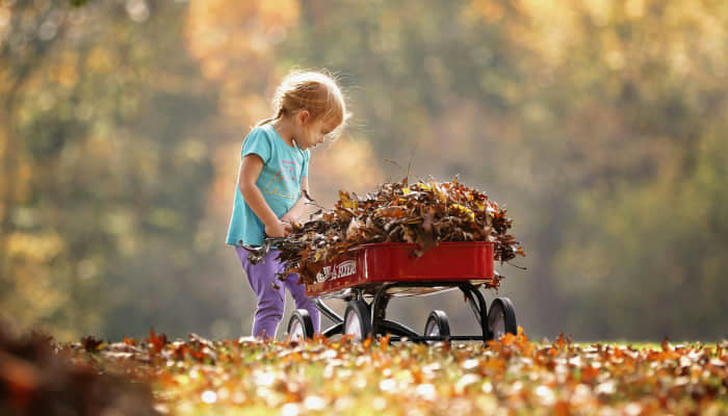Tips For Toddler’s Health Care: How to Protect Toddlers from Getting Sick During the Season Change
As autumn approaches, the weather cools down, and the temperature difference between day and night becomes more noticeable. Toddlers, whose temperature regulation and circulatory systems are still developing, are especially vulnerable to sudden temperature changes. This makes them more susceptible to colds and other illnesses. To help your toddler stay healthy during this season, here are some essential autumn healthcare tips for parents.

Autumn Health Care Tips for Toddlers
1.Ensure Proper Indoor Ventilation
Keep the indoor air fresh and clean by opening the windows regularly to let air circulate. Use air disinfectants to help purify the space. Keep an eye on the temperature, humidity, and air quality. The ideal indoor temperature is between 18-20°C, with humidity levels between 50-60%. Open the windows 3-4 times a day for about 15 minutes, and wipe surfaces with a damp cloth daily to maintain a fresh and comfortable environment.
2.Encourage Physical Activity and Build Immunity
Boost your toddler’s physical fitness through regular exercise. More outdoor activities will help strengthen their immune system, improve their adaptability to temperature changes, and increase their resistance to illnesses. Active play promotes better organ function and overall health.
3.Dress Appropriately for the Weather
It’s crucial to dress your toddler in layers that can be easily adjusted as temperatures change. Avoid bundling them up too tightly, as this may cause sweating. Sweating can lead to colds if they’re exposed to wind afterward. A little chill is acceptable, but don’t overdo it. Allow your child to move comfortably without excessive layers.
4.Provide a Balanced Diet
Make sure your toddler gets a balanced diet to strengthen their immune system. Focus on offering foods rich in vitamins, and ensure they drink plenty of water to stay hydrated.
5.Keep Up with Vaccinations
Follow your toddler’s immunization schedule to ensure they are protected against infectious diseases. Timely vaccinations help boost immunity and prevent illnesses.
6.Teach Good Hygiene Practices
Instill the habit of washing hands before and after meals and after using the restroom. Encourage proper food hygiene and a clean lifestyle. Avoid crowded public places, and ensure your toddler wears a mask in high-risk areas. Respiratory infections often spread through droplets from sneezing or coughing.

Precautions for Toddler Care in Autumn
1.Clothing
Because of the significant temperature fluctuations, toddlers should wear an extra layer in the morning and evening compared to during the day. If they’re active and sweating, you can place a towel behind them or change their clothes after play. Opt for light, breathable shoes instead of heavy leather shoes.
2.Diet
Incorporate more vitamin-rich foods into your toddler’s diet, especially those high in vitamins A and C, which help prevent respiratory infections. Autumn-friendly foods such as garlic, radish, ginger, and leeks can also boost immunity. Even if toddlers are picky about these foods, parents can experiment with different preparations. If your child tends to cough in autumn, try making stews with rock sugar and raw pears.
3.Home Environment
Although the weather is cooling, it’s still important to open the windows regularly to ensure good indoor ventilation. Make sure your toddler's bedding is exposed to sunlight often, and take it outside to air out and wash on weekends.
4.Outdoor Activities
Autumn is an ideal time for outdoor play. Take your child outside for fresh air and some sunshine. Sun exposure helps with calcium absorption and supports your toddler’s overall physical development.

Health Tips for Toddlers in Autumn
1.Hydration
Encourage your toddler to drink plenty of water throughout the day. If your child doesn’t like plain water, try offering chrysanthemum tea, black plum soup, or honeysuckle dew. In addition, feeding your child seasonal fruits like watermelon, pears, and oranges, which are high in water content, helps keep them hydrated. Soups and clear broths are also excellent for replenishing fluids.
2.Avoid “Heat-Inducing” Foods
Reduce the intake of foods that are too stimulating, such as garlic, ginger, leeks, and hot peppers. Minimize salty foods, as they can increase dehydration. Fried foods and fruits with high sugar content, like lychees and longans, should also be limited.
3.Skin Care
To protect your toddler’s skin during the autumn months, use soft towels when washing their face, and avoid scrubbing too hard. After washing, apply skin care products containing natural moisturizers. Lips are especially prone to chapping, so use a warm, damp towel to soothe them before applying lip balm. To prevent dryness in the nasal passages, you can use a saline solution on a cotton swab to moisturize the inside of the nose.
4.Nutrition for Autumn Health
Focus on high-protein foods like milk, soy products, fish, and meat to support growth and immunity. Include whole grains such as corn, whole wheat bread, and millet in your toddler’s diet to prevent constipation. Add more fiber-rich vegetables like spinach, radish, carrots, celery, and cauliflower to help digestion. A well-balanced diet with a variety of fruits, vegetables, and proteins will reduce the risk of illness during autumn.
